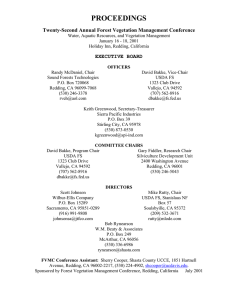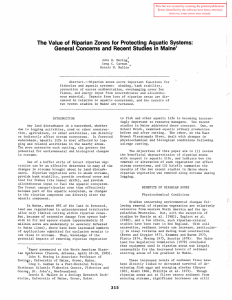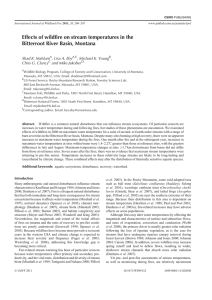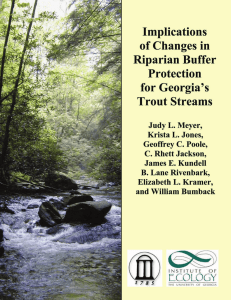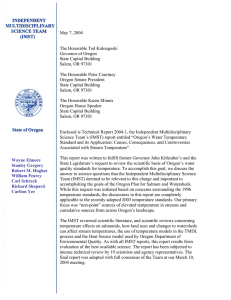Restoring riparian forests as a tool to mitigate effects of... temperatures in salmon-spawning streams of the interior Columbia River Basin
advertisement
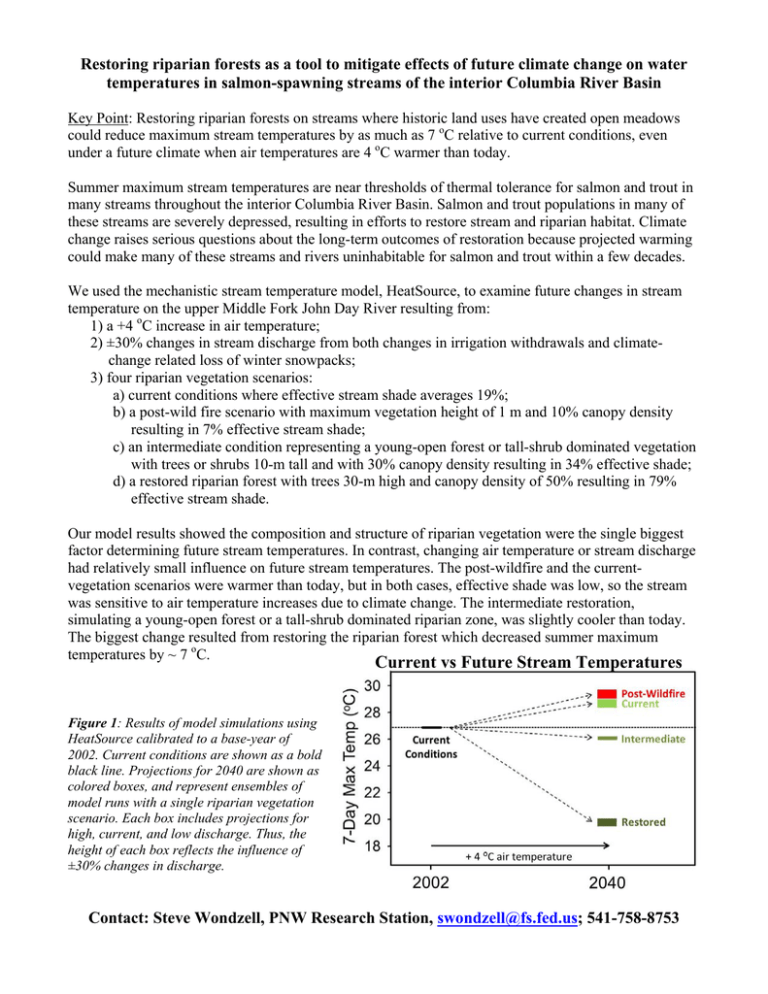
Restoring riparian forests as a tool to mitigate effects of future climate change on water temperatures in salmon-spawning streams of the interior Columbia River Basin Key Point: Restoring riparian forests on streams where historic land uses have created open meadows could reduce maximum stream temperatures by as much as 7 oC relative to current conditions, even under a future climate when air temperatures are 4 oC warmer than today. Summer maximum stream temperatures are near thresholds of thermal tolerance for salmon and trout in many streams throughout the interior Columbia River Basin. Salmon and trout populations in many of these streams are severely depressed, resulting in efforts to restore stream and riparian habitat. Climate change raises serious questions about the long-term outcomes of restoration because projected warming could make many of these streams and rivers uninhabitable for salmon and trout within a few decades. We used the mechanistic stream temperature model, HeatSource, to examine future changes in stream temperature on the upper Middle Fork John Day River resulting from: 1) a +4 oC increase in air temperature; 2) ±30% changes in stream discharge from both changes in irrigation withdrawals and climatechange related loss of winter snowpacks; 3) four riparian vegetation scenarios: a) current conditions where effective stream shade averages 19%; b) a post-wild fire scenario with maximum vegetation height of 1 m and 10% canopy density resulting in 7% effective stream shade; c) an intermediate condition representing a young-open forest or tall-shrub dominated vegetation with trees or shrubs 10-m tall and with 30% canopy density resulting in 34% effective shade; d) a restored riparian forest with trees 30-m high and canopy density of 50% resulting in 79% effective stream shade. Our model results showed the composition and structure of riparian vegetation were the single biggest factor determining future stream temperatures. In contrast, changing air temperature or stream discharge had relatively small influence on future stream temperatures. The post-wildfire and the currentvegetation scenarios were warmer than today, but in both cases, effective shade was low, so the stream was sensitive to air temperature increases due to climate change. The intermediate restoration, simulating a young-open forest or a tall-shrub dominated riparian zone, was slightly cooler than today. The biggest change resulted from restoring the riparian forest which decreased summer maximum temperatures by ~ 7 oC. Current vs Future Stream Temperatures Figure 1: Results of model simulations using HeatSource calibrated to a base-year of 2002. Current conditions are shown as a bold black line. Projections for 2040 are shown as colored boxes, and represent ensembles of model runs with a single riparian vegetation scenario. Each box includes projections for high, current, and low discharge. Thus, the height of each box reflects the influence of ±30% changes in discharge. Contact: Steve Wondzell, PNW Research Station, swondzell@fs.fed.us; 541-758-8753







